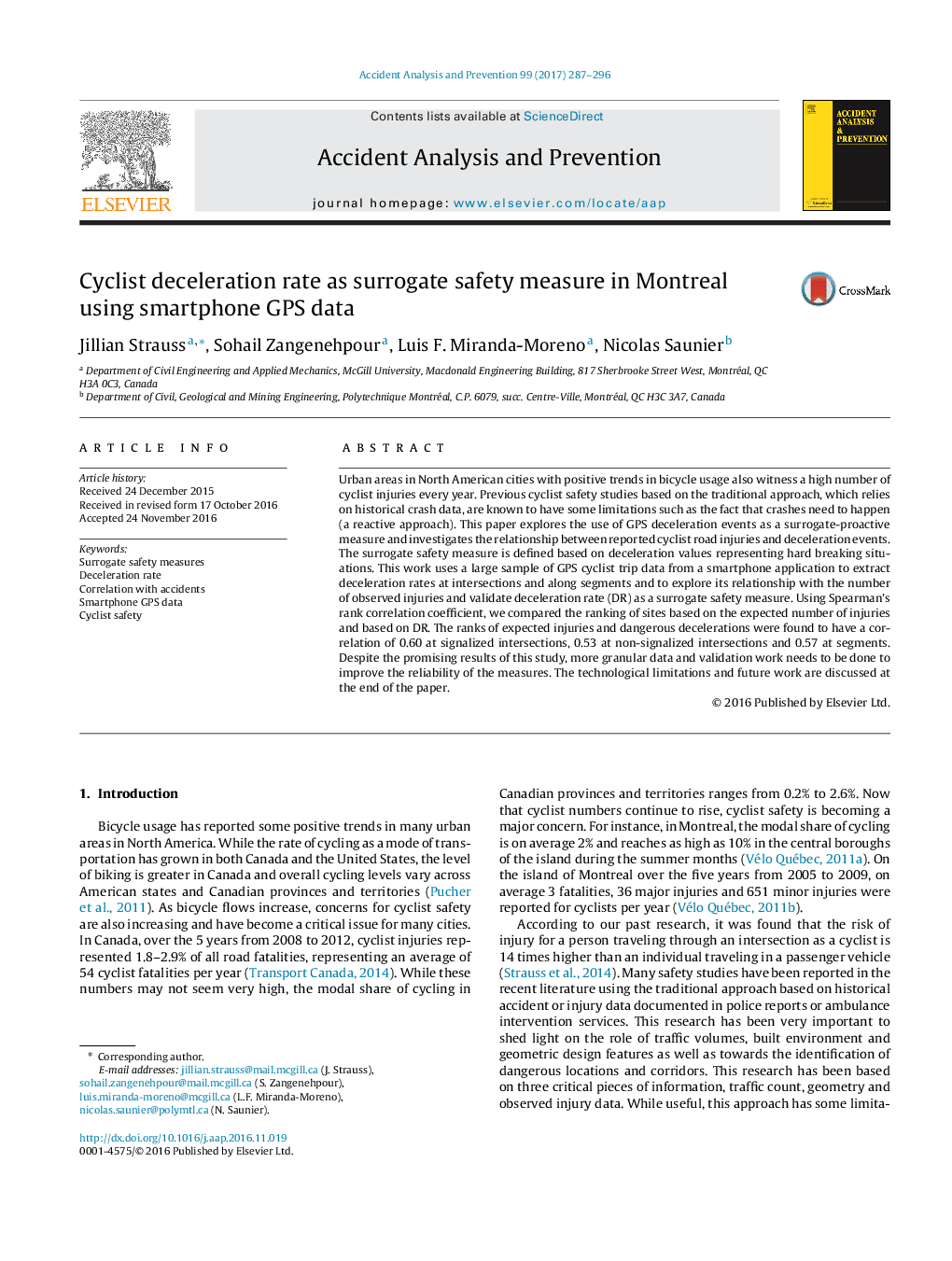| Article ID | Journal | Published Year | Pages | File Type |
|---|---|---|---|---|
| 4978886 | Accident Analysis & Prevention | 2017 | 10 Pages |
Abstract
Urban areas in North American cities with positive trends in bicycle usage also witness a high number of cyclist injuries every year. Previous cyclist safety studies based on the traditional approach, which relies on historical crash data, are known to have some limitations such as the fact that crashes need to happen (a reactive approach). This paper explores the use of GPS deceleration events as a surrogate-proactive measure and investigates the relationship between reported cyclist road injuries and deceleration events. The surrogate safety measure is defined based on deceleration values representing hard breaking situations. This work uses a large sample of GPS cyclist trip data from a smartphone application to extract deceleration rates at intersections and along segments and to explore its relationship with the number of observed injuries and validate deceleration rate (DR) as a surrogate safety measure. Using Spearman's rank correlation coefficient, we compared the ranking of sites based on the expected number of injuries and based on DR. The ranks of expected injuries and dangerous decelerations were found to have a correlation of 0.60 at signalized intersections, 0.53 at non-signalized intersections and 0.57 at segments. Despite the promising results of this study, more granular data and validation work needs to be done to improve the reliability of the measures. The technological limitations and future work are discussed at the end of the paper.
Related Topics
Physical Sciences and Engineering
Chemical Engineering
Chemical Health and Safety
Authors
Jillian Strauss, Sohail Zangenehpour, Luis F. Miranda-Moreno, Nicolas Saunier,
